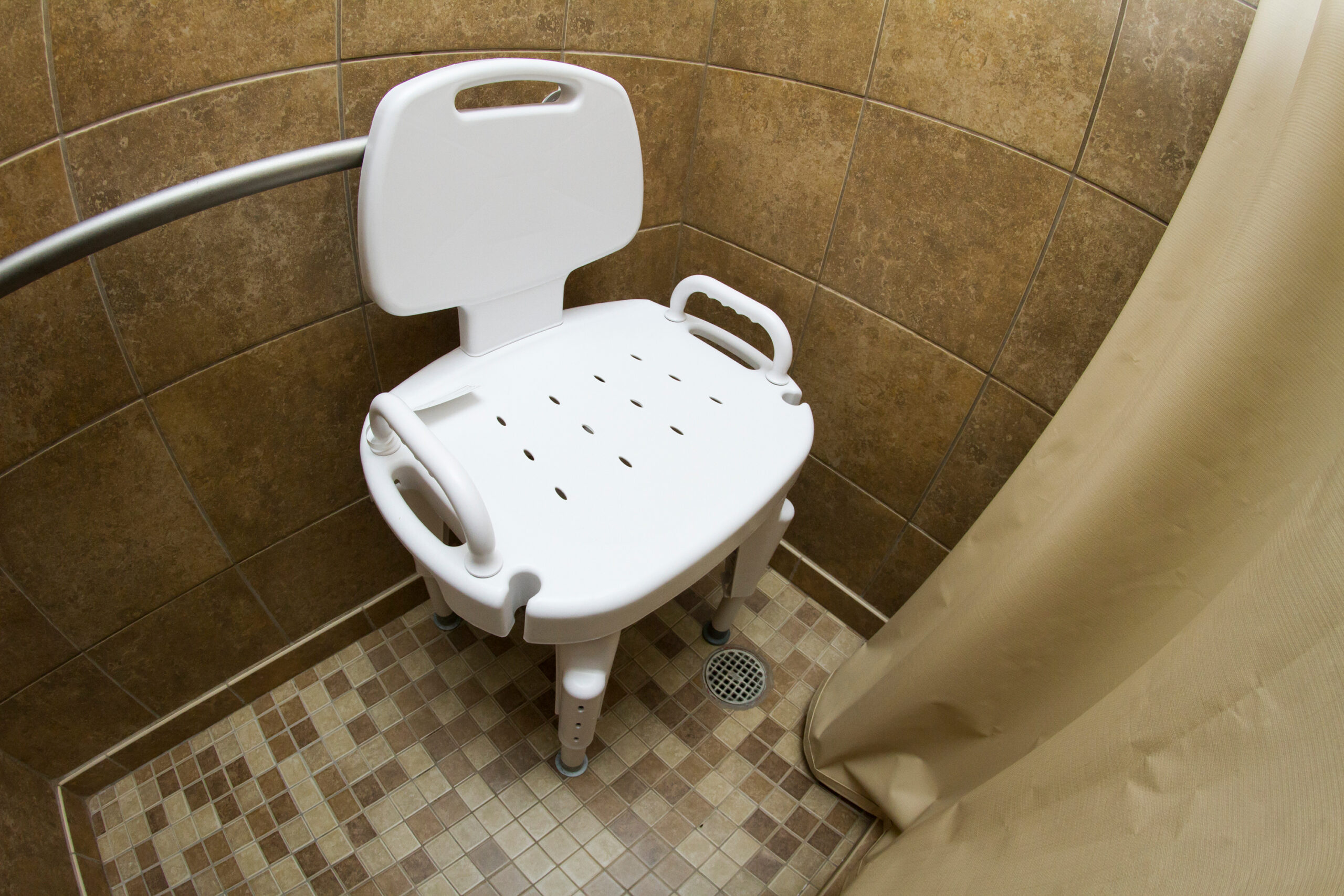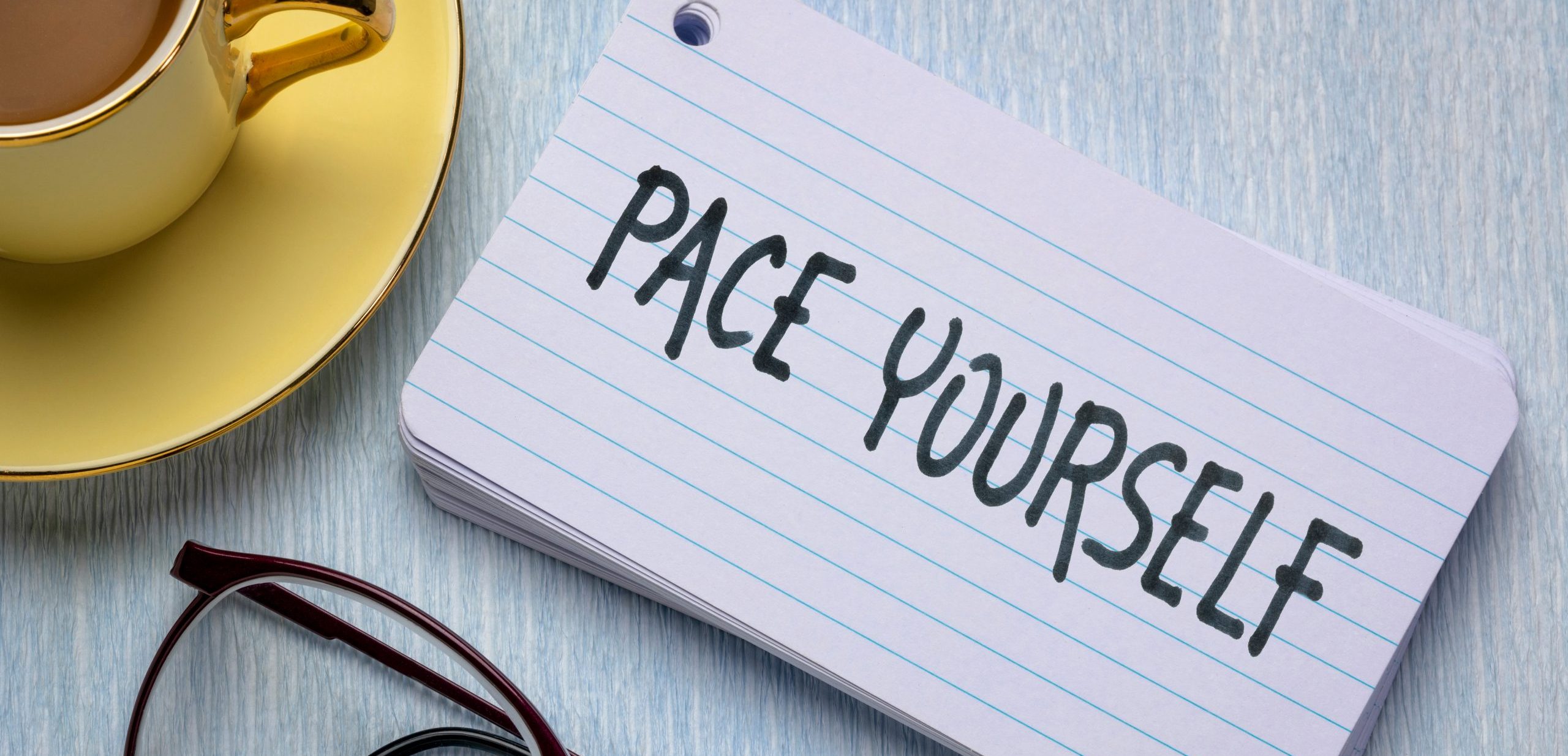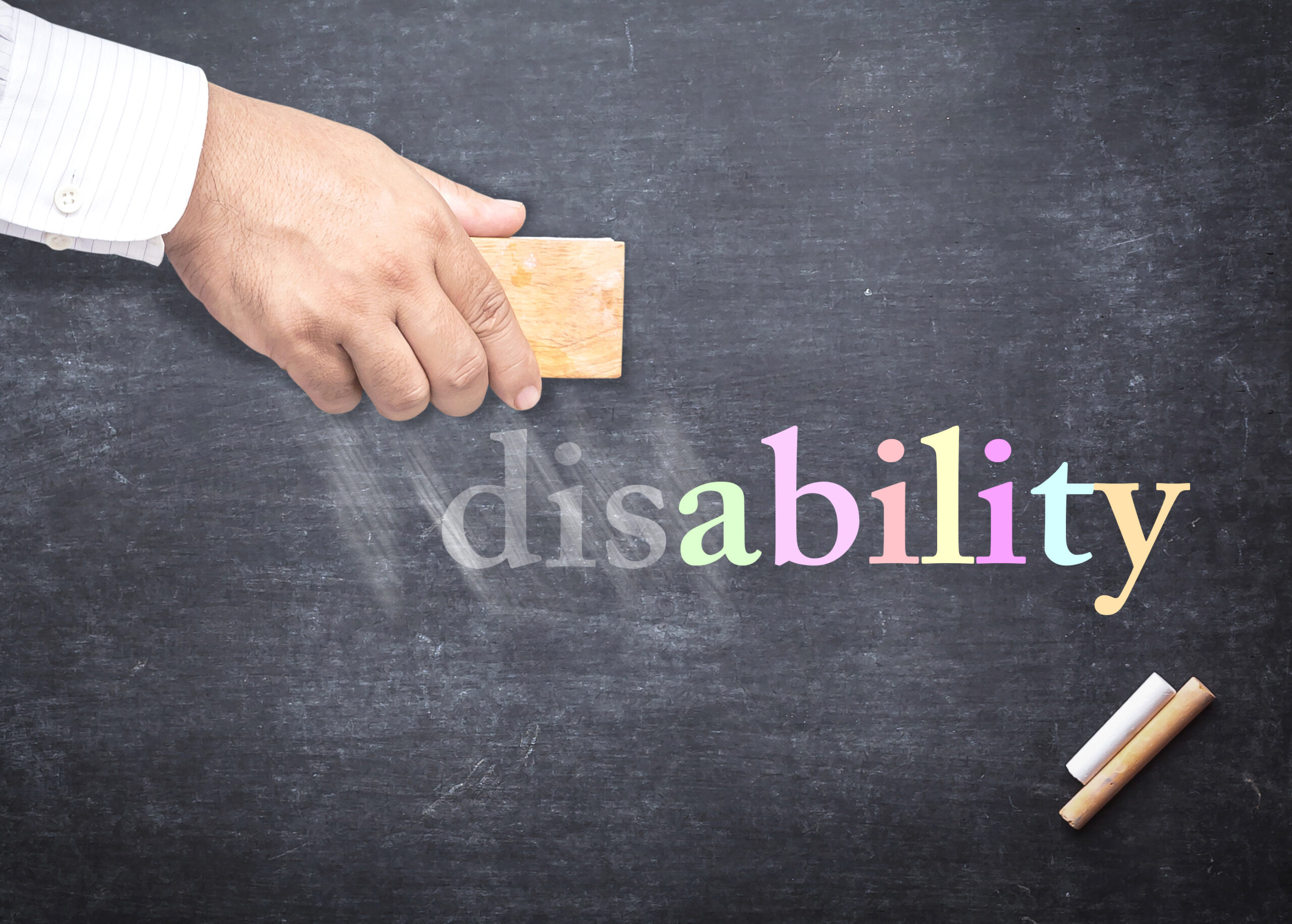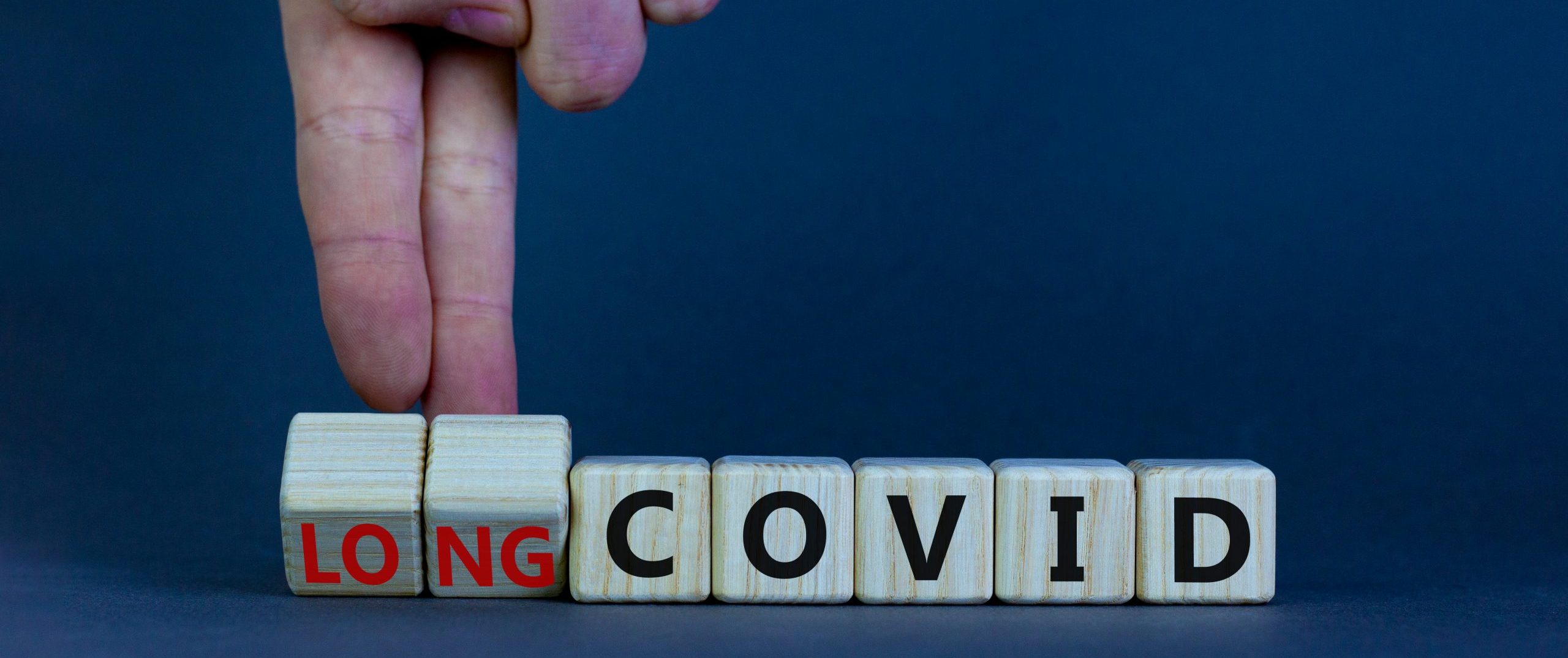Now live! RTHM Direct – simplified medication access for Long COVID, ME/CFS and related conditions. Check it out
Long COVID can greatly affect your ability to perform tasks that may have been easy before COVID. Things like a morning shower or a walk around the block can now leave you short of breath, cause an increase in brain fog, or make it challenging to move the next day. This is called post-exertional malaise (PEM), or a ‘crash’. Some people may also call it a ‘flare’. If you follow the instinct to “just push through it,” you may find yourself unable to even get out of bed for days afterward. While these changes to your health are frustrating, there is good news. There are ways you can adapt your lifestyle to better manage your Long COVID symptoms and help improve your quality of life.
Your Symptoms and Activity Log Provide Insight
In our previous segment, What Makes Symptoms Worse, we focused on symptom and activity tracking in order to begin seeing patterns and identifying what may be triggering a flare, or increase in your symptoms. Once you establish a tracking history, you should be able to see connections between certain activities and symptom flares.
For example, let’s say before COVID you were very active. You wore a Fitbit fitness tracker and strived to hit over 10K steps a day. Now, with Long COVID and symptom tracking, you have discovered that on days you walk more than 2K steps, you experience increased muscle weakness and fatigue, or maybe even have trouble sitting up in the morning. In order to avoid these increased symptoms, you need to monitor your steps every day and, when you see you are getting close to 2K, you know that you are approaching your energy limit and must reduce or stop activity for the rest of the day. This allows you to carefully monitor activity throughout the day to ensure that you rest when needed and do not push yourself past your energy limit.
Making Lifestyle Changes to Avoid Triggers
Learning to live around your Long COVID is often necessary in order to help try and keep symptoms manageable and avoid symptom flares. If you have been tracking your symptoms and activities, you have identified activities, foods, weather, or other potential triggers that can make symptoms worse. Once you identify these triggers, it is important to do what you can to avoid or minimize triggers on any given day. Here we look at some ways that can help you make these adjustments in order to achieve a good quality of life.
Implement Pacing into Your Daily Life
Pacing is the balance between activities and rest. However, we are not just talking about physical activity. Activity, in this case, can be anything that is physical, mental, and even emotional. For example, an activity could be showering in the morning. But it could also be watching your favorite television show or socializing with friends and family. All of these activities put stress on your system and can contribute to an increase in symptoms.
Pacing is a strategy that allows you to balance any activity with the necessary rest your body needs in order to stay within your energy limits and avoid a flood of symptoms. Once you learn what contributes to worsening symptoms, you can begin to adapt your daily activities to help you avoid pushing past your body’s limits. Instead of doing everything at once, you distribute the activities you need to do, allowing for your body to rest in between activities or even pause at what you would normally think of as “in the middle of” an activity.
To learn more about pacing, read What Is Pacing for Post-Exertional Malaise?
These changes can be challenging, especially for those who lived an active life before COVID. You may have good days where your symptoms are minimal and you feel like you can return to your normal activity levels. Oftentimes, however, this increased activity will trigger a symptom flare that you experience the next day or the day after that. Even when you feel good, it is best to PACE yourself every day in order to prevent symptom flares. As time goes on, you may find you are able to gradually increase your energy limits, but once you experience a return or flare in symptoms, you must drop back to a lower energy limit.
Make Your Daily Activities Easier with a Little Help
As a healthy individual, chances are you never gave much thought to making it through the average day. You woke up, had your coffee, took a shower, got dressed, and headed out for a full day of work. You never had to think about how you were doing something. Yes, you may have been tired at the end of the day, but after a good night’s sleep, you woke up feeling refreshed and ready for the day.
With Long COVID, this typical morning ritual may be enough to completely wipe you out. After this routine, the idea of a full day of work just is not an option and many people are struggling with the loss of their ability – and the desire to feel productive.

Rather than eliminating what we love or need to do, you can tolerate some tasks by learning how to do them a little differently, with PEM in mind. Here are a few examples of adaptations that can help with everyday tasks, such as showering, getting dressed, putting on makeup, doing the dishes, cooking, shopping, and more.
- Placing a chair in the bathroom or shower to make daily self-care easier
- Tall stools in the kitchen to sit on between activities or while performing some activities, like stirring a pot on the stove, can help with doing dishes and cooking
- Delivery services/online groceries can help get what you need without the unnecessary trips out
- Electric shopping carts allow you to continue shopping while easing the level of exertion
- Disability parking permits can minimize extended walking
- Anything done by hand – like folding laundry or tidying a room – can be done a bit at a time (folding five items at once; dividing a room into ‘quadrants’ to tidy throughout the day)
Simplify Your Life and Decide What Is Most Important
Determining where to make changes to your daily lifestyle can be difficult. Your symptom and activity logs will help you see which activities can cause symptoms to worsen or even new symptoms to develop. When you know these potential triggers, you can adjust your daily activities to keep you within your energy limit. When deciding how to make those changes, these three points can help.
- What Is Most Important to You
If something is important to you, say a family wedding, then you may make the decision to attend the wedding knowing you may risk going over your energy limit. However, you can plan to limit activity before and after the wedding in order to help give your body the rest it needs. - Make You and Your Health a Priority
With Long COVID or any chronic condition, it is important to put yourself and your health first. If you know an activity is going to cause severe symptoms, it is okay to say no. - Give Yourself Permission to Let Some Things Go
A sink full of dishes or unfolded laundry is not the end of the world. Just because it needs to be done, does not mean you need to do it right away. Dishes can wait until you have more energy.
Do Not Be Too Hard on Yourself – Celebrate the Small Things
Going from an active lifestyle to struggling to make it through a day overnight can be overwhelming. Long COVID takes its toll not only on the body but on your mind as well. It can be disheartening to no longer be able to work or take care of obligations like you used to. You may feel like you are no longer valuable. But that’s not the case. Yes, you have Long COVID, but you still have value, and your life still has meaning. You may just have to find a different meaning than you had planned.
You will have days that you push too hard, and symptoms will flare. Don’t be too hard on yourself and learn from that experience. As you learn more about your energy limits, adapting will become easier but it will never be 100% perfect, especially because some triggers can’t be controlled. You may experience occasional flares and you may need to rest more than normal, but you will learn to listen to your body and adjust as necessary. Celebrate when you go a week without symptom flares. Treat yourself to something special and know that you are doing everything you can to keep your body in the best health you can.
Tracking and Adjusting Can Help Improve Your Long COVID Medical Care
Because we are still learning about Long COVID and how it affects people, your medical care team is learning right along with you. Tracking your activities, your symptoms, and how any adaptations to your activities help improve your symptoms can provide a clearer picture for your medical team. This information gives them a clear picture of your daily life and the struggles you are facing in your Long COVID journey. In our next segment, Partnering with Your Clinical Team, we look into the importance of patients being equal partners in their own care.

Get updates
Join our mailing list



